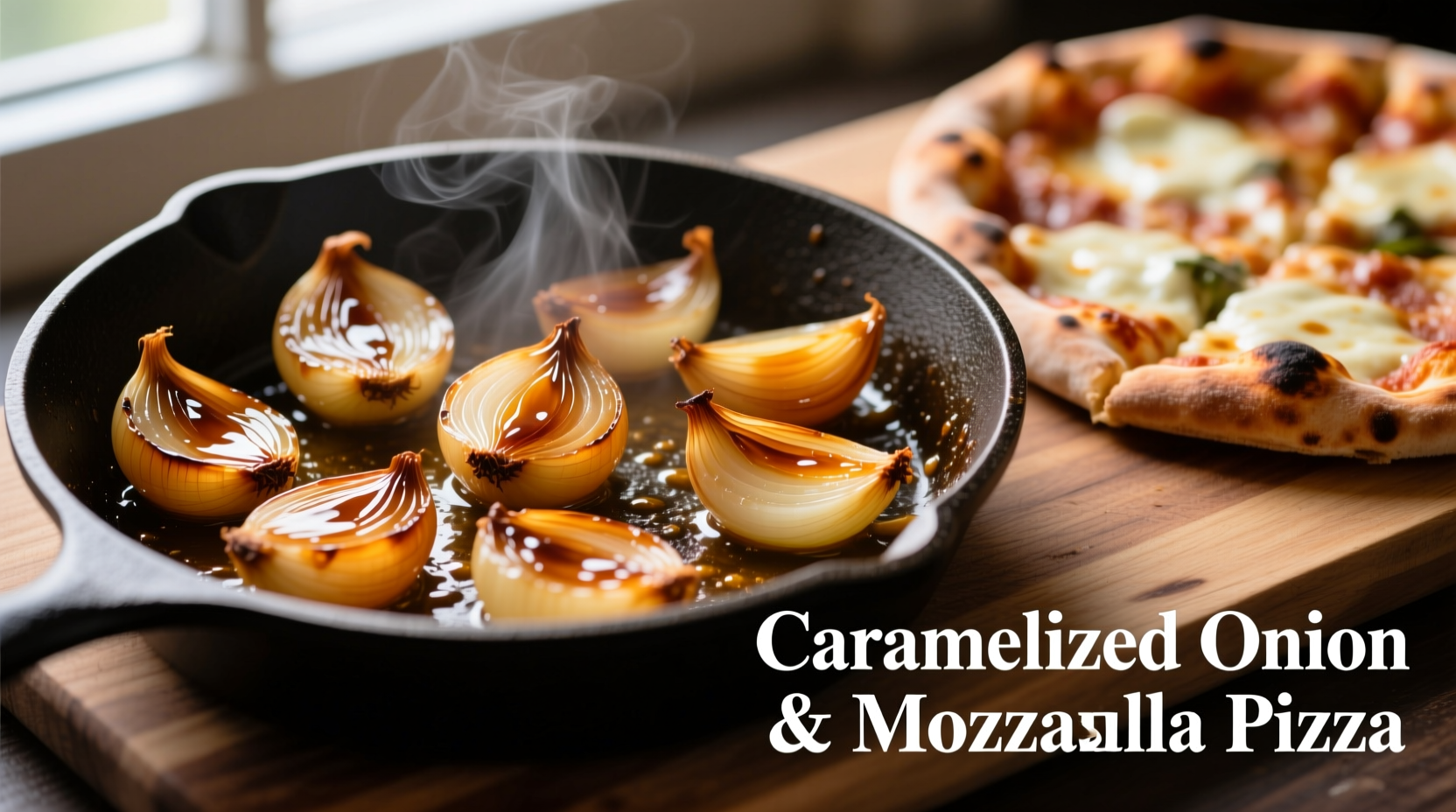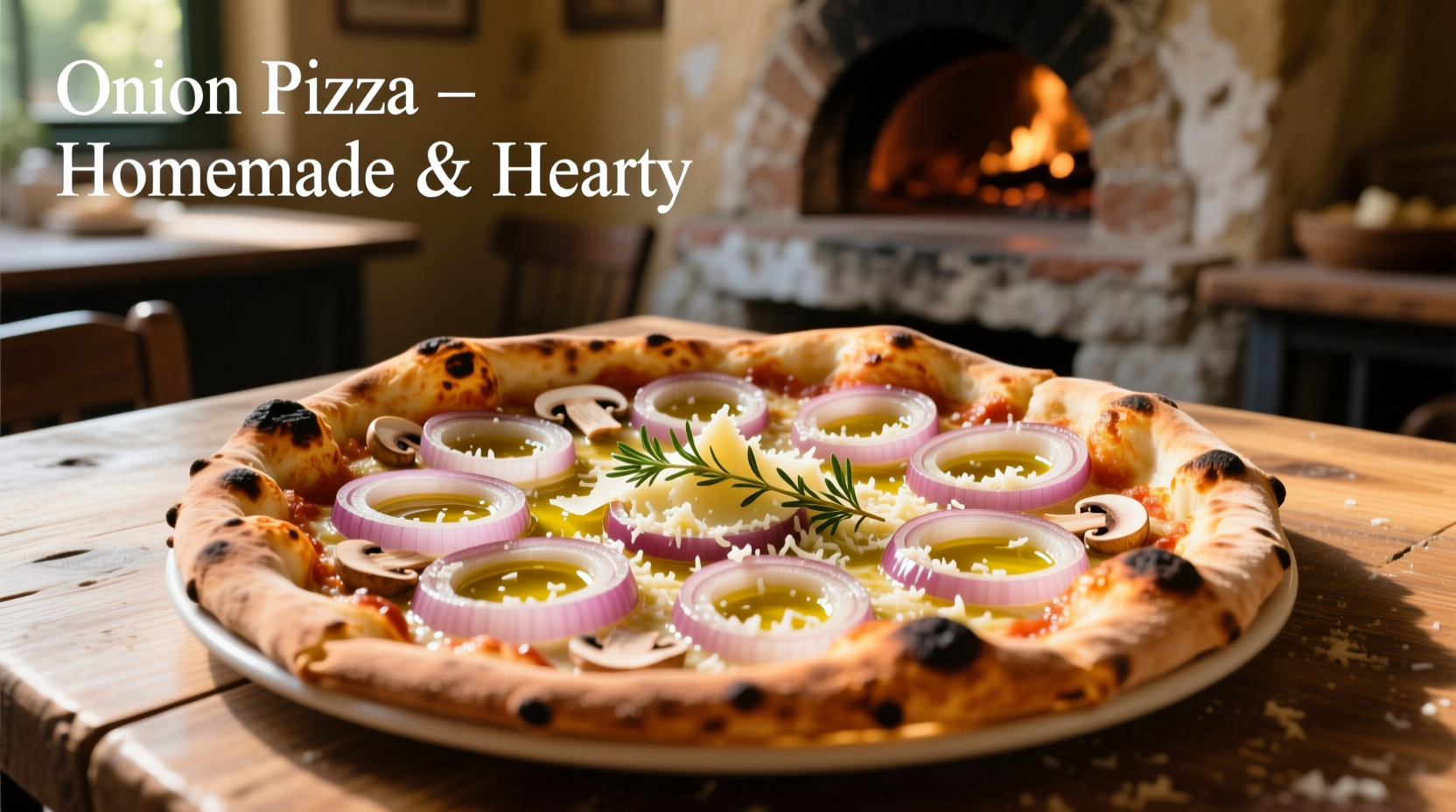The Science Behind Perfect Onion Pizza
Onions contain natural sugars that undergo the Maillard reaction when heated, creating hundreds of new flavor compounds. According to USDA food science research, yellow onions contain approximately 4-5% sugar by weight, which explains their exceptional caramelization potential compared to other varieties. This chemical transformation is why properly cooked onions taste completely different from their raw counterparts.
| Onion Variety | Sugar Content | Best Preparation | Pizza Pairing Recommendation |
|---|---|---|---|
| Yellow Onions | 4-5% | Slow caramelization | Classic Margherita, sausage |
| Red Onions | 3-4% | Thinly sliced raw or quick roast | Goat cheese, arugula, balsamic |
| Shallots | 7-8% | Finely minced | Prosciutto, figs, gorgonzola |
| Sweet Onions | 5-6% | Quick sauté | Chicken, pesto, mozzarella |
Preparing Onions for Maximum Flavor Impact
Professional pizzaiolos know that onion preparation makes or breaks the final product. Start by selecting firm, heavy-for-their-size onions with dry skins. For caramelized onion pizza, slice yellow onions uniformly to 1/8-inch thickness using a mandoline for consistency. Cook them slowly in olive oil over medium-low heat for 25-30 minutes, stirring occasionally until they reach a deep golden brown. Adding a pinch of salt early in the process draws out moisture and accelerates caramelization.
For those short on time, the oven method delivers excellent results: toss sliced onions with olive oil, spread on a parchment-lined baking sheet, and roast at 400°F (200°C) for 20-25 minutes until edges brown. This technique preserves more of the onion's natural sharpness while developing rich flavor notes.

Avoiding Common Onion Pizza Mistakes
Many home cooks encounter soggy pizza when using onions improperly. The critical factor is moisture control. Raw onions contain approximately 89% water, which can create steam pockets under cheese and sauce. Always cook onions until they've released most of their liquid and the pan shows no visible moisture.
Another frequent error involves timing. Adding onions too early in the pizza-making process leads to overcooking and bitterness. For caramelized onions, apply them after the pizza has baked for 3-4 minutes, allowing them to heat through without burning. With raw red onions, add them during the last minute of baking or immediately after removing the pizza from the oven to preserve their crisp texture and vibrant color.
Perfect Pairings for Onion Pizza
Onion pizza shines when paired thoughtfully with complementary ingredients. The natural sweetness of caramelized onions balances beautifully with salty cured meats like prosciutto or pancetta. For vegetarian options, combine with roasted mushrooms and thyme for an earthy flavor profile that satisfies even meat lovers.
Consider these professional pairing recommendations:
- Caramelized onion + goat cheese + arugula - The tangy cheese cuts through the onion's sweetness
- Thinly sliced red onion + feta + Kalamata olives - Mediterranean flavor combination
- Shallot confit + smoked mozzarella + truffle oil - Gourmet restaurant-style pizza
- Caramelized onion + sausage + bell peppers - Classic Italian-American combination
Historical Context of Onions in Pizza Making
While tomatoes and cheese define traditional Neapolitan pizza, onions have played a supporting role throughout pizza's evolution. Historical food records from the University of Naples show that working-class Neapolitans occasionally added onions to their pizza montanara (fried pizza) in the late 19th century as an affordable way to add flavor and substance.
The modern popularity of onion pizza emerged in post-war America, where Italian immigrants adapted their recipes using locally available ingredients. By the 1950s, caramelized onion pizza had become a staple in pizzerias across the Midwest, particularly in cities with large Italian-American communities like Chicago and Detroit. Food historians at the Smithsonian Institution note that the 1970s saw a resurgence of interest in vegetable-focused pizzas, including onion variations, as health-conscious eating gained popularity.
Creating Your Perfect Onion Pizza: Step-by-Step
Follow this professional method for restaurant-quality onion pizza at home:
- Prepare your pizza dough and let it rest at room temperature for 1 hour
- Caramelize 2 large yellow onions slowly in 2 tablespoons olive oil with pinch of salt
- Preheat pizza stone or steel in oven at maximum temperature (500-550°F/260-290°C) for 1 hour
- Stretch dough to 12-inch circle, leaving slightly thicker edge
- Spread thin layer of tomato sauce, leaving 1-inch border
- Add 4 ounces fresh mozzarella, torn into pieces
- Arrange cooled caramelized onions evenly over cheese
- Bake for 8-10 minutes until crust is golden and cheese bubbles
- Remove from oven and finish with fresh herbs or microgreens
For best results, let the pizza rest for 2-3 minutes before slicing. This allows the cheese to set slightly, preventing toppings from sliding off when cut.
When Onion Pizza Works Best (And When It Doesn't)
Understanding context boundaries helps you serve onion pizza successfully. Onion pizza excels in these situations:
- As an appetizer before a rich main course
- For vegetarian or meatless Monday meals
- When serving guests who prefer milder flavors
- As part of a pizza tasting menu with varied toppings
Consider avoiding onion pizza when:
- Serving very young children who may reject stronger flavors
- Creating pizza for immediate outdoor consumption (onions can become overpowering in heat)
- When time constraints prevent proper onion preparation
- Pairing with extremely delicate cheeses that onions might overwhelm
Final Tips for Onion Pizza Success
Mastering onion pizza requires attention to detail but delivers exceptional results. Remember these professional tips:
- Always cool caramelized onions before adding to pizza to prevent premature melting of cheese
- Use a pizza peel dusted with semolina for easy transfer to hot stone
- For extra flavor dimension, deglaze the onion pan with balsamic vinegar and drizzle over finished pizza
- Thinly sliced raw red onions added after baking provide beautiful color contrast
- Store leftover caramelized onions in airtight container for up to 5 days for quick pizza preparation
With these techniques, you'll create onion pizza that showcases the vegetable's remarkable transformation from sharp and pungent to sweet and complex. The key is patience during preparation and thoughtful pairing with complementary ingredients that enhance rather than compete with the onion's natural flavors.











 浙公网安备
33010002000092号
浙公网安备
33010002000092号 浙B2-20120091-4
浙B2-20120091-4